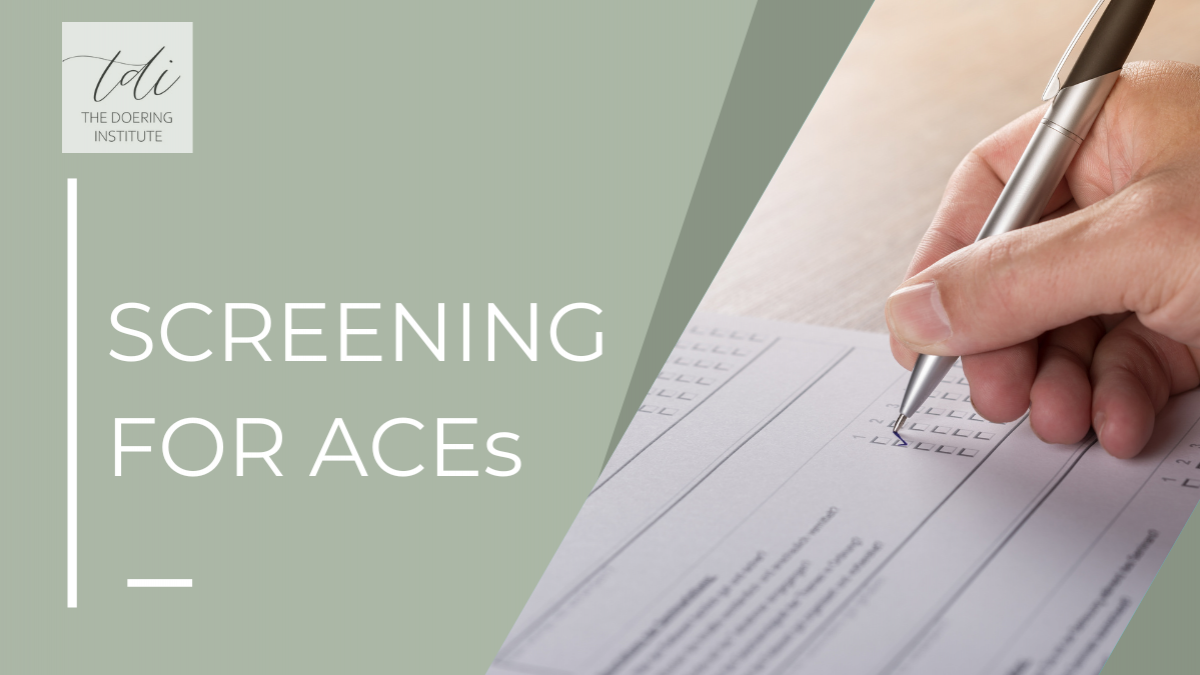ACEs as a screening tool (words of caution)

Learn about how schools are using the ACE measure to screen for trauma and some good questions to ask about this practice to protect children.
This is the second post in a series on ACEs. The first is here.
A boy with a fake gun pointed at my head. A girl who started stalking me and became obsessed with my every move because I listened to her. A student who told me that I was uncultured swine and not worthy of teaching anyone.
What do these three situations I faced as a teacher have in common? Trauma. Ongoing, unresolved, and pervasive. Their pain screamed at me through their actions, and yet I was ill equipped at the time to care for them. One question I've always had is "How could we have intervened in their lives sooner so that someone could have known before their high school years that they needed help?"
I'm thankful that people are working toward addressing these questions these days, and want to process "out loud" with you about one of these interventions people are attempting to target interventions to kids who need them: screening using the ACE measure. I do not have all of the answers, but certainly have thoughts about this new attempt at a solution.
To be sure, the behavior I was seeing was the culmination of years of living with pain and needing help. And I wasn't able to help with everything they needed to move in a healthy direction: I needed additional supports. Universal screening attempts to address these major issues so that other students are given the help they need. For that, I am thankful. However, we need to look at both the benefits of these interventions and the drawbacks so we can make informed decisions moving forward that consider holistic trauma-informed lenses.
Pros:
- This is an attempt to work toward preventative measures for children--if we could know who is at risk, maybe we could do more to prevent issues stemming from their experiences.
- People are trying to help kids who have been through hard things! This is a positive step, as we have historically failed at loving them well (and I know from personal experience--I do this work so people don't have to fail like I did).
- The ACE measure is easy to understand and implement and there is a lot of data that tells us, on average, how someone in the population with a certain ACE score may fare when it comes to negative life outcomes.
Cons:
- The ACE measure was a research tool, not a screening one. The purpose of a tool is important. It has been demonstrated to be a reliable measure for research, but there is not evidence for it as a reliable screening tool. We should question using a research tool as a screening one and make sure that the research points to its use in this situation. (Researchers are sounding the alarm about this, and there are likely several studies underway that we should keep an eye out for about the use of the ACE measure as a screening tool.)
- Privacy and ethics of asking these questions--do schools deserve this private information about children? Do children have the right to tell their own story when and how they want? Do parents feel obligated to report? Is it asking students to relive their worst pain?
- What about trauma not measured by this? Generational or community trauma. War. Medical trauma. The ACE measure is a limited measure that has a limited scope. This measure was not intended to be an all encompassing measure of trauma, so using it to screen for trauma means that we will not have an accurate measure.
- ACE survey doesn't measure depth, just breadth. So you know broadly how many of these experiences someone has had, but how often or how intensely they experienced these things. This is important because the event is not the only determiner of trauma, but also the person's experience of the event and the lasting effects. These two things are ignored by the ACE measure.
I don't have all of the answers, but I think that asking the right questions can take us in the right direction. I regret a lot about how I taught students before I knew about trauma-informed education, so I know that asking hard questions about a practice you might already be engaging in can be difficult. But I want to encourage you to be willing to ask the hard questions because it helps (1) make sure we are doing what is best for kids no matter how much acknowledging mistakes and missteps can be painful and (2) bolster our resolve as we implement interventions for students that, after determining through thorough questioning they are the right thing, we know are going to make a difference.
If you want to learn more, join our Association of Trauma-Informed Educators for monthly training opportunities!
 Jessica Doering
Jessica Doering 